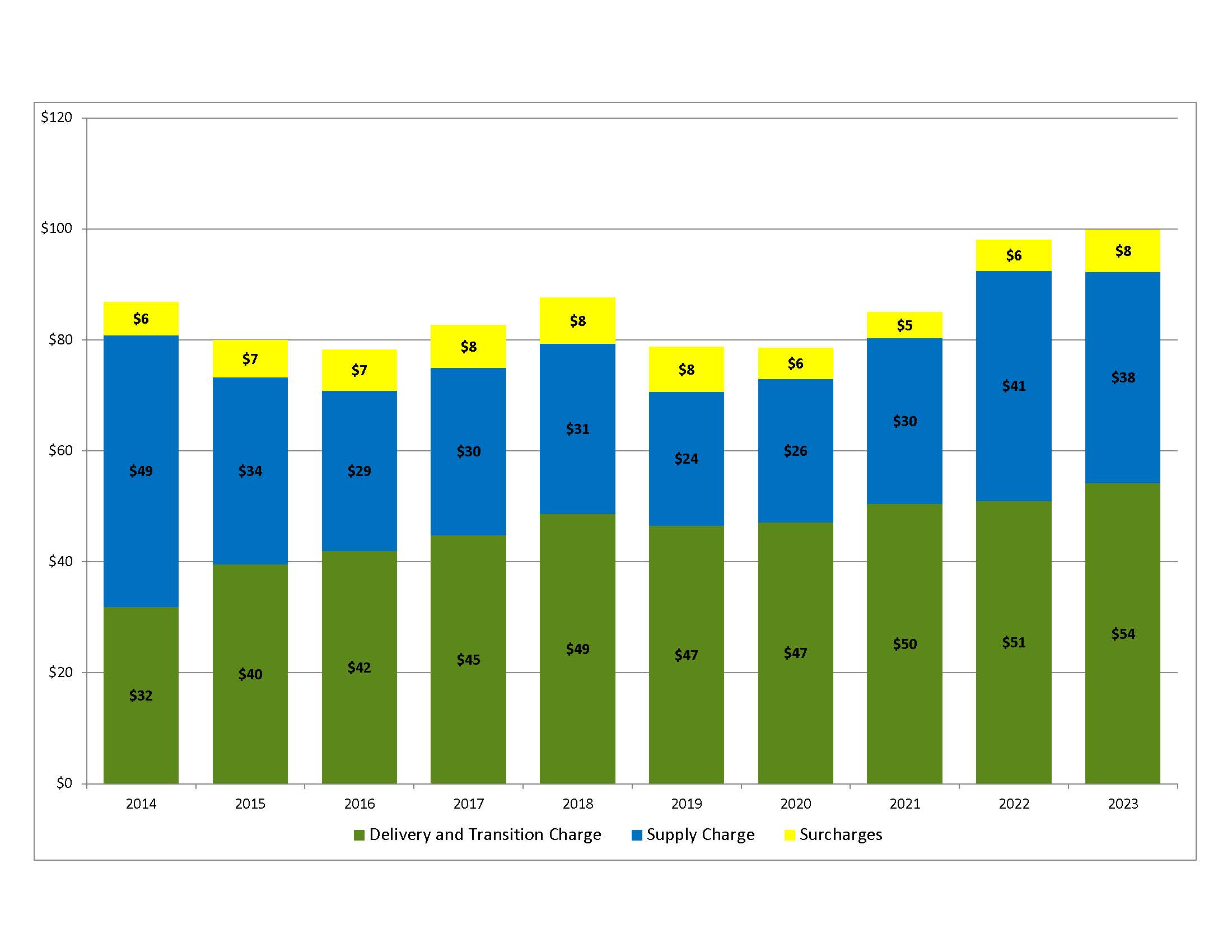Typical Residential Electricity Bill Amount
Interested in what comprises a typical residential electricity bill? The graphs below compare average monthly electricity bills over the last 10 years for residential customers who purchased their electricity supply from RG&E.
Monthly Residential Electricity Costs
Based on average use of 600 kilowatt-hours per month

The data in the above chart is based on average usage for a typical customer.
Individual bills will vary depending on specific usage.
Some additional information about the average cost data:
Delivery charge: What you pay RG&E to transport electricity to your home or business.
- Revenue Decoupling Mechanism (RDM), a charge or credit on your bill that reflects
the difference between forecast and actual delivery service revenues by service classification to encourage the promotion of energy efficiency and renewable technologies.
Supply charge: What you pay for the electricity purchased for you. RG&E makes no profit on your electricity supply costs. The Supply charge also includes a Merchant Function charge, which represents the administrative cost for RG&E to obtain electricity supply on their customers' behalf.
Transition charge: This charge represents the difference between the cost of energy supply on the open market compared to the cost of RG&E's existing long-term electricity supply contracts. It can be a charge or a credit. Beginning in September 2010, certain costs that were previously included in the Transition Charge were shifted to the Delivery Charge. No increase in the customer’s total bill resulted from this cost shift.
Surcharges: What you pay in state mandated charges, including the:
- Taxes: Includes the collection of Gross Receipts Tax (GRT) imposed by New York State and/or some local municipalities, where applicable.
- System Benefits Charge (SBC), which is used to fund energy efficiency programs, provide assistance for low income customers and energy research. The SBC was expanded in October 2008 to include the Energy Efficiency Portfolio Standard.
- In June 2004, Retail Access Surcharge was added to bills to collect from all customers the amount of retail access credits given to those customers who choose receive their electricity supply from an energy services company (ESCO). This charge ended in September 2010.
